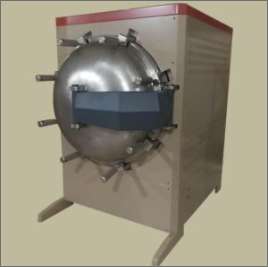
What Is Sintering?
Sintering, by definition, is a process used in manufacturing to compact solid materials. The resulting product is a harder, stronger, more durable mass due to the high heat and pressure applied forcing the atoms of the material into tighter bonds with each other. Most manufacturing processes use a sintering furnace that can provide the necessary temperatures quickly and accurately. At its most effective, sintering materials reduces porousness while enhancing strength. Powder metallurgy is the specific study of the sintering process using powdered metals.
What Are Sintering Materials?
The manufacturing of pottery is the most common use for the sintering process, used the world over. It has been utilized for thousands of years in one form or another to strengthen clay materials. Most people, however, are surprised to learn that powder metallurgy has an equally storied history dating back to the ancient Egyptians over 5,000 years ago.
In contemporary manufacturing, metal powders have become more refined. As sintering technologies have improved, the actual sintering materials have also improved. The sintering powders used in the metal manufacturing process — stainless steel, aluminum, nickel, copper and titanium alloy — make up the vast majority of powder metals used in additive manufacturing today.
Why Would You Sinter Metal?
Powder metallurgy covers a broad range of manufacturing, but what each process shares is the use of sintering powder for metal part fabrication. The benefits of utilizing a furnace or oven — strengthening metal parts through heat and compaction — are core components of additive manufacturing. The sintering process allows us to create components which would decompose otherwise. Because sintering does not require manufacturers to consider solid-liquid phase changes, powder metallurgy is more flexible than conventional manufacturing techniques such as casting, forging and extrusion.
Is Sintering Metal The Same Thing As Melting?
Put succinctly: No. While a sintering furnace utilizes heat to compact metal, the temperature is carefully controlled and kept below a particular part’s melting point. The melting temperature differs based on the metals used in a particular process. The proper sintering furnace for your manufacturing needs will depend on the materials you work with.

The 3 Stages Of The Sintering Process
Powder metallurgy has advanced over the decades and now encompasses a broad range of sintering processes. Most sintering techniques, from powder forging to metal injection moulding and ECAS, share a few base principles:
1. Compose The Sintering Powder
This is the stage in which the composition of your metal parts is determined and mixed. The properties of your powdered metals will determine the overall strengths of your part, the necessary temperature and the overall costs of your production run.
2. Compact Your Powder Metals
In conventional powder forging, a preform mold is then packed and pressed into the desired part shape. Other methods utilize different processes, such as injection moulding, to form their parts.
3. Heat Sintering Materials
Utilizing a sintering furnace, the “green” parts are heated to the appropriate temperature to sinter the material. The temperature is below the specified part’s melting point, yet hot enough to achieve the desired effect of tempering the metal.
What Components Are Made Using The Sintering Process?
The number of parts, tools and components made using sintering furnaces is too numerous to name. Powder metallurgy has been producing components for numerous industries as a trusted manufacturing process. These industries include:
- Aerospace
- Dental equipment
- Battery manufacturing
- Engineering
- Automotive
- Research laboratories
The number of applications is vast and as new sintering technologies are developed, the manufacturing process continues to expand.
Get Custom Sintering Furnaces From SentroTech
SentroTech is an all-in-one provider of custom furnaces and ovens. Our sintering furnaces are purpose-built to meet the needs of your industry or application. SentroTech will engineer your furnace to meet any number of requirements including size, configuration, atmosphere and desired features. We offer sintering furnace models, products and services for a multitude of needs including replacement parts and ongoing customer service to keep your manufacturing process up and running. Contact us today to discuss how we can build the solution to your sintering problem.

